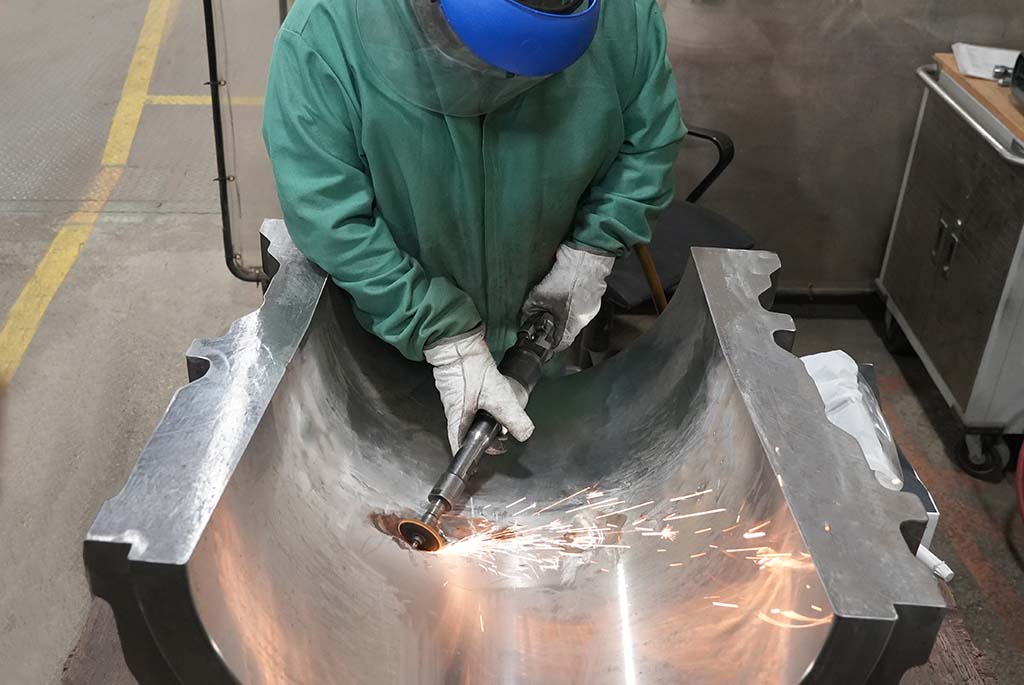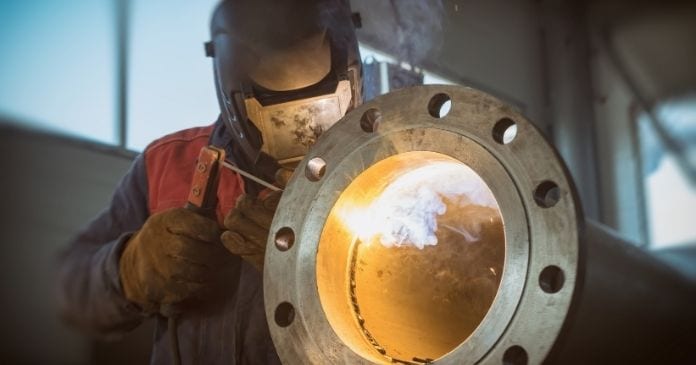All Regarding Welding: Secret Insights Into Techniques and Ideal Practices for Success
Welding incorporates a selection of strategies, each fit for particular products and applications. Comprehending these techniques, such as GMAW, SMAW, and TIG, is crucial for accomplishing excellent results. In addition, the best equipment and safety techniques can not be neglected. As preparation and fixing play essential duties in the welding procedure, mastering these aspects can considerably enhance the high quality of the final item. What are the essential aspects that assure a successful weld?
Comprehending Different Welding Methods
Welding methods encompass a variety of techniques, each suited to details applications and products. Among the most usual methods are Gas Metal Arc Welding (GMAW), Protected Steel Arc Welding (SMAW), and Tungsten Inert Gas Welding (TIG) GMAW, likewise referred to as MIG welding, is preferred for its rate and convenience, making it suitable for thin materials. SMAW, or stick welding, is preferred for its simplicity and effectiveness in outdoor settings, especially with thicker metals. TIG welding offers accuracy and control, making it suitable for intricate job and non-ferrous steels (Montana Mobile Welding and Repair Belgrade Fabrication). Each strategy has its special advantages and considerations, allowing welders to select the ideal technique based upon the job's requirements, product type, and desired outcomes. Comprehending these techniques is important for successful welding
Vital Welding Equipment and Devices
While various welding techniques call for details abilities, the best devices and tools are just as necessary for attaining quality results. Necessary welding equipment includes welding machines, which differ depending upon the method-- such as MIG, TIG, or stick welding. Safety equipment, consisting of gloves, helmets, and aprons, warranties safety and security and convenience throughout the process. Furthermore, components and clamps help safeguard materials in position, guaranteeing precision in welds. Consumables like welding poles, cord, and shielding gas are also important components that affect the top quality of the weld. In addition, devices such as grinders and cutters facilitate surface area prep work and post-weld completing, adding to a specialist outcome. Spending in top notch devices inevitably improves the efficiency and efficiency of welding projects.
Security Practices in Welding
Appropriate security methods are essential in the welding sector to protect workers from potential threats. Welders must put on ideal personal protective devices (PPE), including safety helmets with proper shading, handwear covers, and flame-resistant clothes. Adequate air flow is essential to lower exposure to hazardous fumes and gases produced during the welding procedure. Furthermore, employees must be learnt the correct handling of welding equipment to protect against accidents. Fire safety and security procedures, such as maintaining combustible materials away from the welding area and having fire extinguishers readily available, are necessary. Regular inspections of tools and work areas can aid determine prospective threats before they cause accidents. By adhering to these safety and security practices, welders can produce a more secure working atmosphere and reduce risks related to their trade.
Preparing Products for Welding
Preparing products for welding is an essential step that considerably influences the top quality and integrity of the last item (Welding). Correct prep work includes cleaning up the surface areas to eliminate pollutants such as corrosion, dust, and oil, which can compromise the weld. Strategies such as grinding, sanding, or utilizing solvents are commonly used to attain a clean surface. Additionally, ensuring that the products mesh well is vital; voids can result in weak welds. It's also vital to take into consideration the positioning and positioning of the parts, as this will certainly impact the ease of welding and the final result. Picking the proper filler product and making certain compatibility with the base metals is essential for accomplishing solid, durable welds.
Tips for Achieving High-Quality Welds
Attaining high-quality welds needs focus to information and adherence to ideal methods throughout the welding process. Appropriate joint prep work is important, making certain surface areas are tidy and totally free from pollutants. Choosing the appropriate filler material and welding technique based on the base steels is essential for ideal bonding. Preserving regular traveling rate and angle while welding can protect against flaws and advertise harmony. Additionally, controlling heat input is vital; too much heat can cause bending and damaged joints. If essential, consistently evaluating the welds during the process allows for immediate modifications. Utilizing suitable post-weld treatments, such as cleansing and stress and anxiety alleviation, can improve the sturdiness and honesty of the weld, inevitably making certain a successful outcome.
Repairing Common Welding Issues
Welding frequently presents obstacles that can impact the quality and stability of the final product. Usual problems such as porosity, irregular weld beads, and getting too hot can emerge, each requiring certain repairing methods. Comprehending these troubles is important for welders to enhance their abilities and accomplish optimal outcomes.
Porosity Troubles Explained
Although porosity can frequently be forgotten, it remains an important issue in welding that can endanger the integrity of a finished product. Porosity describes the visibility of small gas pockets within the weld bead, which article can lead and weaken the joint to premature failing. This problem usually arises from pollutants, dampness, or improper securing gas protection during the welding process. To mitigate porosity, welders ought to confirm that the base products are clean and dry, use suitable protecting gases, and maintain consistent welding specifications. On a regular basis checking the devices and setting can additionally aid determine possible problems prior to they manifest in the weld. Attending to porosity properly is essential for achieving strong, durable welds that fulfill top quality criteria.

Irregular Weld Beads
Irregular weld beads can substantially influence the high quality and strength of a finished item. Different factors add to this issue, consisting of inappropriate travel rate, inaccurate amperage settings, and inconsistent electrode angles. When the welder relocates too swiftly, a bead may appear slim and do not have penetration, while relocating too slowly can trigger excessive accumulation. In addition, making use of the wrong amperage can result in either undercutting or too much spatter, both of which compromise weld stability. The welder's technique, such as inconsistent lantern activity, can also lead find out to uneven bead look. To mitigate these troubles, welders should concentrate on maintaining steady, controlled movements and ensuring appropriate devices settings to attain harmony in their welds. Uniformity is key to accomplishing solid and dependable welds.
Overheating and Warping Issues
Excessive warm during the welding process can lead to substantial overheating and deforming concerns, influencing the architectural honesty of the work surface. These issues usually materialize as distortion, which can jeopardize positioning and fit-up, making further setting up testing. Aspects adding to overheating consist of the selection of welding criteria, such as voltage and travel rate, as well as the kind of product being welded. To minimize these issues, welders should keep regular traveling rate and appropriate heat input while checking the workpiece temperature level. Furthermore, preheating or post-weld warm therapy can aid alleviate stresses created by quick air conditioning - Montana Mobile Welding and Repair Belgrade Welding. Normal evaluation and adherence to ideal techniques are essential in protecting against getting too hot and ensuring the longevity and dependability of welded frameworks
Often Asked Questions
What Are the Career Opportunities in the Welding Sector?
The welding sector uses diverse career possibilities, consisting of placements as welders, teachers, designers, and assessors. Professionals can function in manufacturing, construction, aerospace, and vehicle markets, taking advantage of solid demand and affordable incomes in various duties.
Just How Can I Improve My Welding Speed Without Giving Up Top Quality?
To enhance welding rate without giving up high quality, one ought to practice reliable strategies, keep equipment, maximize settings, and improve hand-eye coordination. Routine training and seeking feedback can likewise substantially add to accomplishing quicker, top notch welds.
What Certifications Are Offered for Welders?
Many certifications exist for welders, including those from the American Welding Society (AWS), the National Center for Building Education and Study (NCCER), and various industry-specific organizations. These credentials boost employability and show skill efficiency.
Exactly How Does Welding Influence the Characteristics of Metals?
Welding affects the residential or commercial properties of steels by modifying their find out here now microstructure, which can lead to changes in toughness, ductility, and hardness. Warm input and air conditioning prices throughout the procedure considerably affect these material qualities.
Can I Weld Dissimilar Metals Together?
